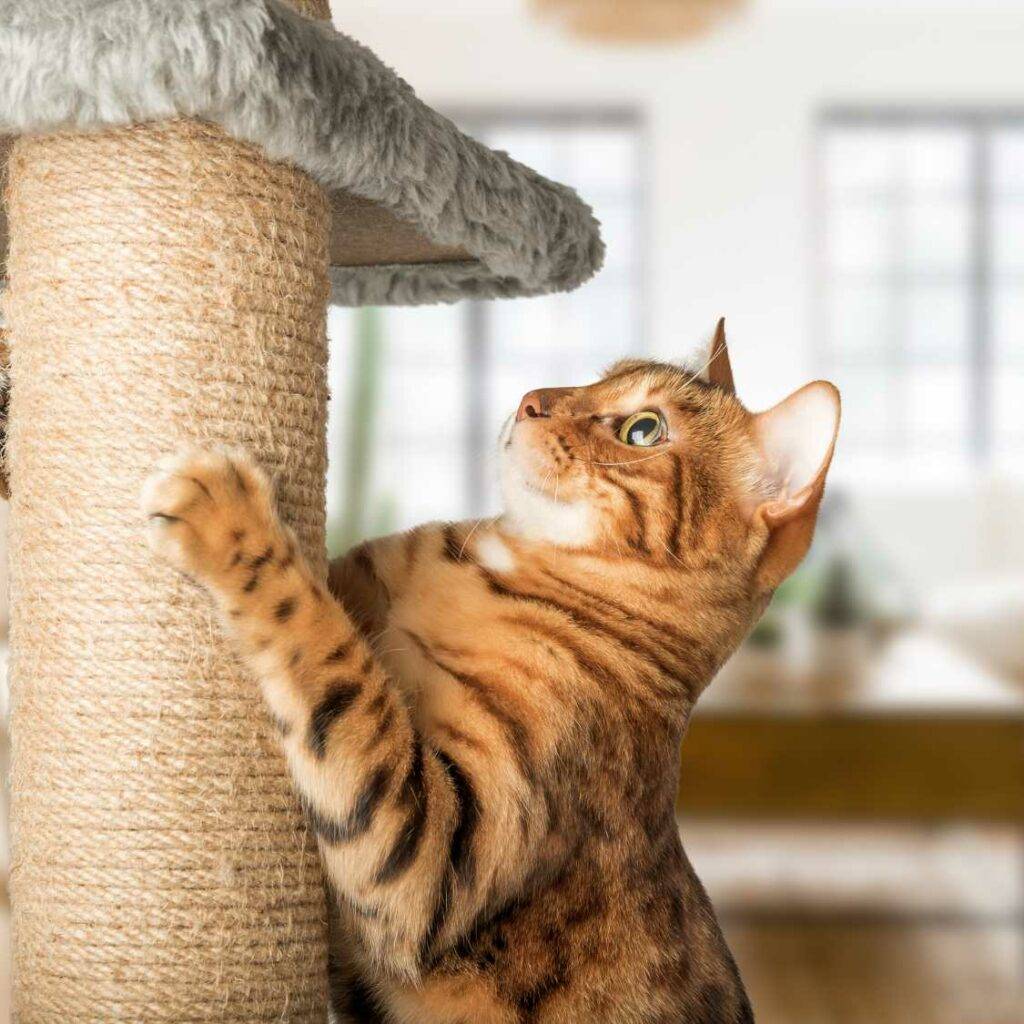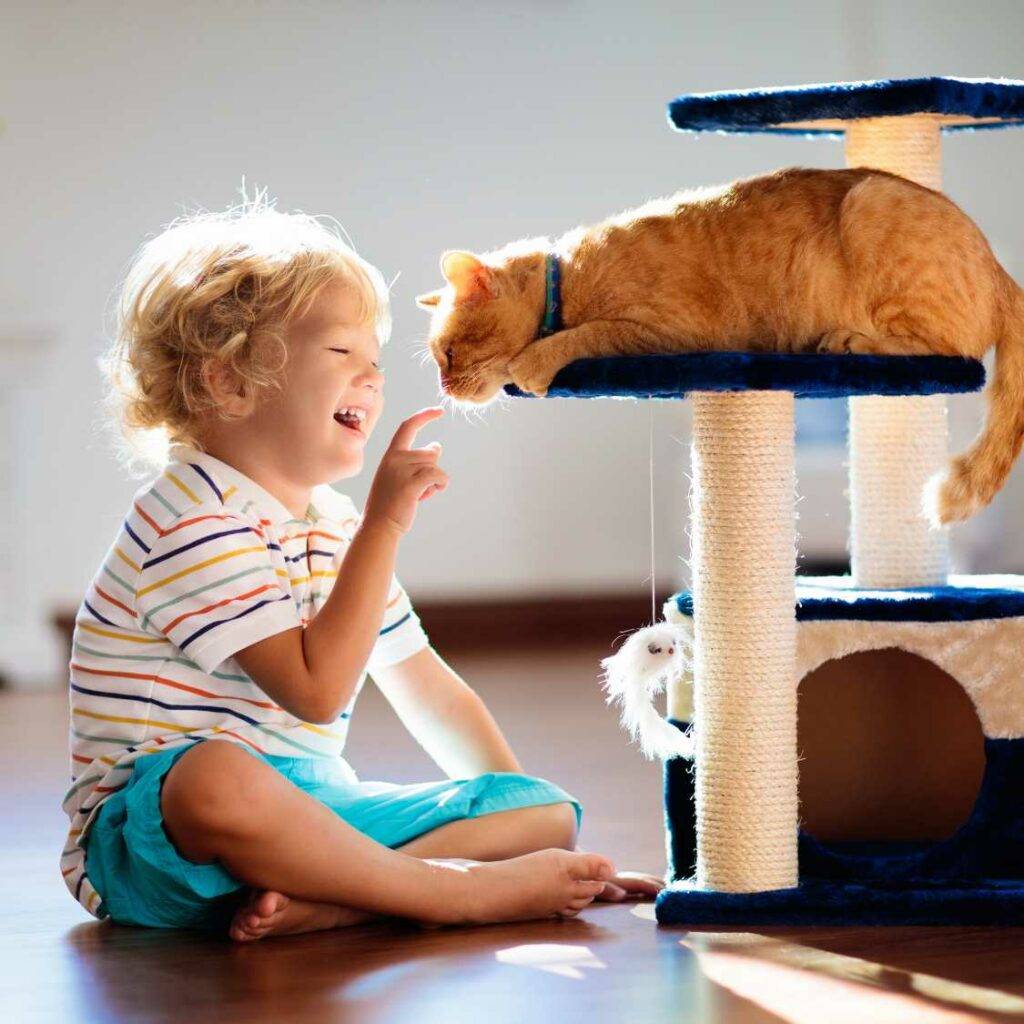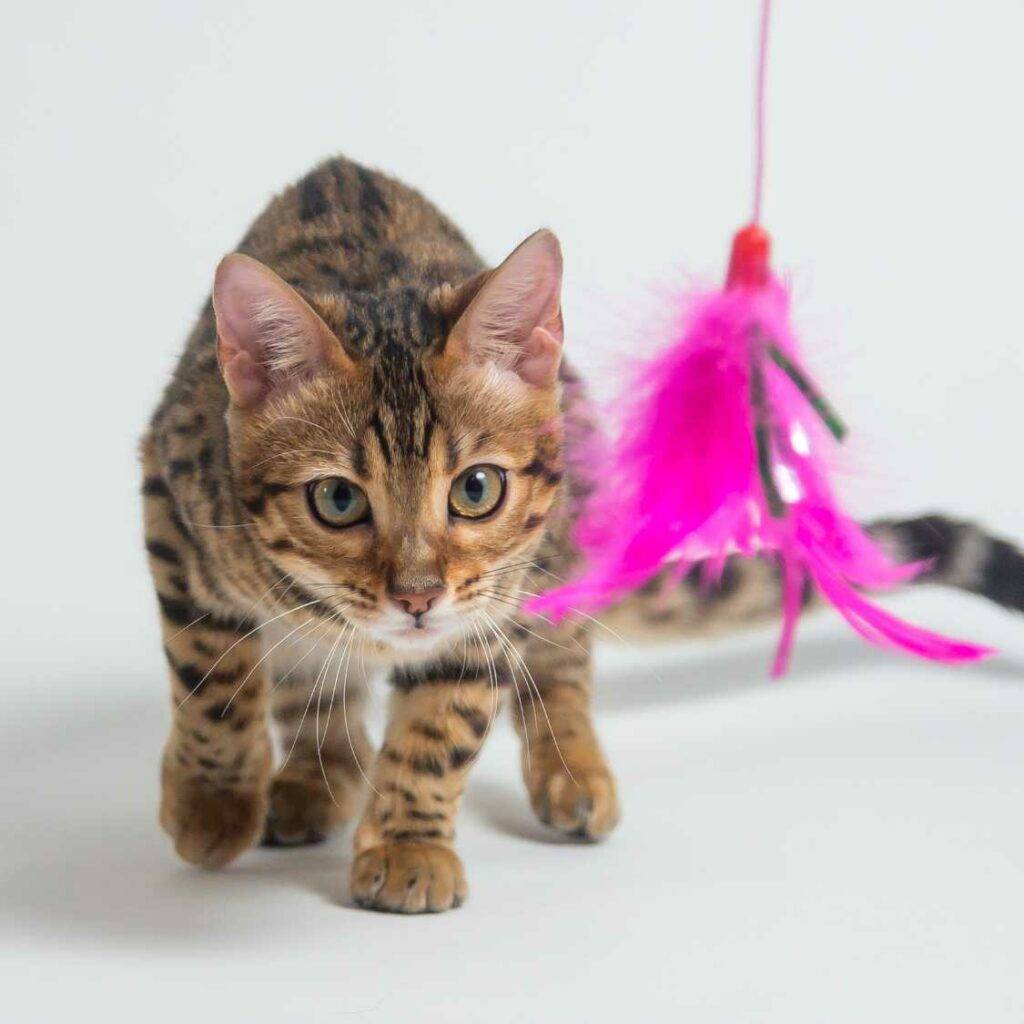How to Stop Your Cat from Scratching Furniture

Tired of your cat turning your couch into a scratching post?
If you’re a cat owner, you know the struggle of protecting your furniture from your feline friend’s claws. Scratching is a natural behavior for cats, but it can wreak havoc on your home. In this blog, we will delve into why cats scratch and share proven methods to keep your furniture safe without compromising your cat’s happiness.
The main goal of this blog is to provide you with effective strategies to prevent your cat from scratching furniture, ensuring a harmonious living environment for both you and your pet.
Understanding Why Cats Scratch

Natural Behavior: Scratching is an innate and instinctive behavior for cats, deeply embedded in their nature. It’s a fundamental part of being a cat and serves multiple crucial functions.
Reasons for Scratching:
- Marking Territory: Cats have scent glands in their paws, and scratching helps them mark their territory. This behavior leaves both a visual mark and a scent mark, signaling to other animals that this space is claimed.
- Sharpening Claws: Scratching helps cats shed the outer layer of their claws, keeping them sharp and healthy. This is vital for their ability to hunt and defend themselves, even if they are indoor pets.
- Stretching and Exercise: Scratching provides a full-body stretch for cats, engaging their muscles and maintaining their flexibility. It also serves as a way to relieve pent-up energy and stress.
Providing Appropriate Alternatives

Scratching Posts: Scratching posts are essential tools for cat owners to divert scratching behavior from furniture.
- Importance: A good scratching post allows cats to fulfill their scratching needs safely and acceptably, helping to preserve your furniture.
- Choosing the Right One: When selecting a scratching post, consider the following:
- Height: Ensure the post is tall enough for your cat to fully stretch out vertically. Generally, a post should be at least 30-36 inches high.
- Material: Cats often prefer rough materials like sisal rope or fabric, which provide good resistance to scratching. Avoid carpeted posts as they might confuse cats into thinking it’s acceptable to scratch household carpets.
- Stability: The post should be sturdy and not wobble or tip over when your cat uses it. A heavy base or wall-mounted post can provide the necessary stability.
Placement: The location of scratching posts is crucial in making them more attractive than your furniture.
- Tips for Placement:
- High-Traffic Areas: Place scratching posts in areas where your cat spends a lot of time, such as living rooms or near their favorite resting spots.
- Near Furniture: Position posts close to the furniture your cat likes to scratch. This encourages them to use the post instead of the furniture.
- Entrances and Exits: Cats often like to scratch when they wake up or when they enter or leave a room. Placing posts near doorways can capitalize on this behavior.
Variety: Offering different types of scratching alternatives can cater to your cat’s preferences and keep them engaged.
- Horizontal Scratchers: Some cats prefer to scratch horizontally. Providing flat scratchers or mats made of corrugated cardboard or sisal can fulfill this need.
- Climbing Trees: Multi-functional cat trees or towers provide not only scratching surfaces but also opportunities for climbing, playing, and resting. These structures can be very appealing to cats and help keep them entertained and exercised.
Training Techniques

Positive Reinforcement: Encouraging your cat to use cat scratching posts through positive reinforcement is an effective way to establish good habits.
- Treats: Reward your cat with treats when they use the scratching post. This creates a positive association with the behavior you want to encourage.
- Praise: Verbal praise and gentle petting when your cat scratches the post can reinforce the desired behavior. Cats respond well to positive attention.
- Playtime: Engage your cat in play around the scratching post. Use toys like feather wands or laser pointers to entice them to interact with the post, making it a fun and rewarding experience.
Redirection: When your cat starts to scratch furniture, gently guide them to the appropriate alternative.
- Gentle Guidance: Pick up your cat and place them near the scratching post if you catch them scratching furniture. Avoid scolding or punishing them, as this can create negative associations.
- Interactive Redirection: Use toys to lead your cat to the scratching post. Once they start scratching the post, reward them with treats or praise.
Consistency: Consistency is key in training your cat to use scratching posts.
- Regular Reinforcement: Be consistent in rewarding your cat every time they use the scratching post, especially in the initial stages of training. This helps establish a strong habit.
- Routine: Establish a routine where scratching posts are part of your cat’s daily activities. Place posts in areas where your cat naturally spends time and ensure they are readily accessible.
- Patience: Training takes time and patience. Don’t get discouraged if your cat doesn’t immediately take to the scratching post. Keep reinforcing positive behavior and redirecting inappropriate scratching.
Protecting Your Furniture

Covers and Shields: Using protective measures on your furniture can deter your cat from scratching it.
- Furniture Protectors: Plastic shields or guards can be placed on the corners and arms of furniture to provide a physical barrier that cats don’t enjoy scratching.
- Double-Sided Tape: Applying double-sided tape to areas your cat likes to scratch can be highly effective. Cats dislike the sticky texture, making these spots less appealing.
Deterrents: Safe deterrents can help discourage your cat from targeting your furniture.
- Citrus Sprays: Cats generally dislike the smell of citrus. Spraying a citrus-scented solution on your furniture can help keep your cat away. Ensure the spray is safe for use on fabrics and won’t cause damage.
- Aluminum Foil: Covering areas with aluminum foil can be a temporary deterrent. The texture and sound of foil are unappealing to cats, deterring them from scratching.
Regular Maintenance: Keeping your cat’s claws well-maintained can minimize the potential damage to your furniture.
- Trimming Claws: Regularly trimming cat’s claws reduces the sharpness and, consequently, the damage they can do. Use proper cat nail clippers and be careful not to cut too close to the quick, which can cause pain and bleeding.
- Soft Paws: Consider using claw covers, such as Soft Paws, which are small, soft caps that fit over your cat’s claws. These covers protect your furniture while still allowing your cat to go through the motions of scratching.
Environmental Enrichment

Playtime: Regular playtime is crucial for reducing boredom and stress-related scratching.
- Importance: Engaging your cat in regular play sessions helps expend their energy and keeps them mentally stimulated. A well-exercised cat is less likely to resort to destructive behaviors like scratching furniture out of boredom or stress.
- Types of Play: Interactive play using cat toys that mimic prey, such as feather wands, laser pointers, and balls, can be very effective. Aim for at least two 10-15 minute play sessions daily to keep your cat happy and healthy.
Interactive Toys: Providing a variety of interactive cat toys can keep your cat mentally and physically stimulated.
- Puzzle Toys: Toys that dispense treats or require problem-solving can keep your cat engaged for extended periods. These toys challenge their minds and provide a rewarding experience.
- Motion Toys: Automated toys that move or make noise can simulate hunting experiences. Toys that mimic the movement of small animals are particularly appealing to cats.
- DIY Options: Simple household items, like cardboard boxes, paper bags, and DIY feather toys, can also provide hours of entertainment.
Safe Spaces: Creating safe and comfortable spaces for your cat to relax is essential for their well-being.
- Resting Spots: Ensure your cat has access to cozy, quiet resting spots where they can retreat and feel secure. This could be a cat bed, a cushioned windowsill perch, or a quiet corner with blankets.
- Vertical Spaces: Cats love to climb and observe their surroundings from high vantage points. Cat trees, shelves, or window perches can provide these vertical spaces, fulfilling their instincts.
- Hiding Places: Provide hiding spots, like covered beds or small tunnels, where your cat can escape and feel safe. These areas help reduce stress and provide a sense of security.
Professional Help

Veterinarian Advice: Sometimes, scratching behavior can indicate underlying health or behavioral issues.
- When to Consult: If your cat’s scratching seems excessive or is accompanied by other problems such as hair loss, skin lesions, or changes in behavior, it’s essential to consult a veterinarian. They can rule out medical conditions like allergies, parasites, or skin infections that might be causing discomfort and leading to increased scratching.
- Behavioral Concerns: A vet can also assess whether anxiety, stress, or other psychological factors are contributing to your cat’s scratching behavior. They can recommend appropriate treatments or strategies to address these issues.
Behaviorists: For persistent scratching problems, seeking advice from a cat behaviorist can be highly beneficial.
- Specialized Expertise: Cat behaviorists are experts in feline behavior and can provide tailored advice and training techniques to address problematic scratching. They can help identify the root causes of the behavior and develop a comprehensive plan to modify it.
- Customized Solutions: A behaviorist can work with you to create a customized strategy that fits your cat’s specific needs and your home environment. This might include behavior modification techniques, environmental changes, and enrichment strategies.
- Support and Guidance: Ongoing support from a behaviorist can be invaluable in making sure the strategies are effective and adjusting them as needed. They can provide guidance and reassurance, helping you stay consistent and patient during the training process.
Conclusion
Training your cat to stop scratching furniture requires patience and consistency. By understanding your cat’s needs and using the strategies outlined in this blog, you can create a harmonious living environment for both you and your feline friend. Remember, positive reinforcement and providing appropriate alternatives are key to successful behavior modification. Stay persistent and patient, and soon you’ll see your cat enjoying their scratching posts and leaving your furniture intact.











































